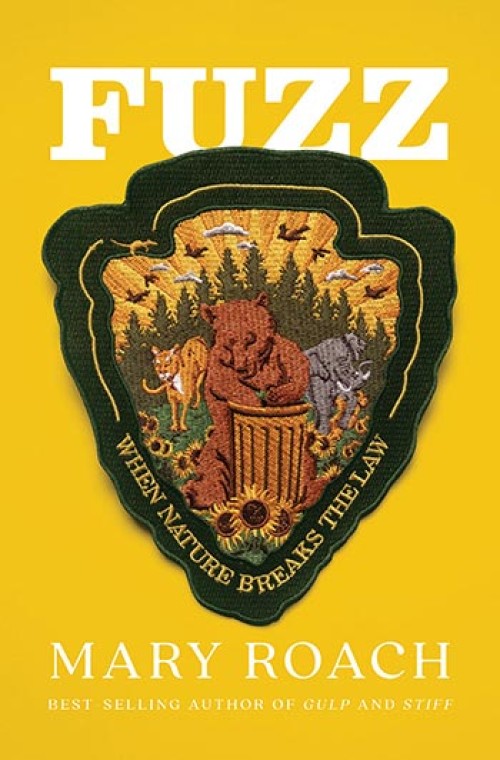by Mary Roach
W.W. Norton and Company, 2021
Last spring, I woke in the wee hours of the morning to the sound of someone rearranging my metal deck furniture. The “someone” was a bear. For those living in and near the forests of the Northeast, close encounters of a wildlife kind are commonplace. Fuzz: When Nature Breaks the Law by Mary Roach is about what happens when these encounters turn ugly, and how the authorities respond.
Roach keeps the mood light with her characteristic appreciation for the ridiculous, despite the sometimes-grim aspects of her topic. The book begins with descriptions from a Canadian-led Human-Wildlife Attack Response Training held in a Reno, Nevada, casino – a surreal convergence of animal attack footage, slot machines, and Canadian colloquialisms. Despite the humorous context, this training is critical for wildlife officers who must correctly interpret animal “crime” scenes and successfully respond to active attacks.
But prevention is the best cure, and Roach turns quickly to the question of how to avoid hazardous animal encounters before they occur. Many animals that come into conflict with people are attracted to urban areas by edible rubbish. The stories Roach includes in Fuzz demonstrate that human-animal conflicts decrease when authorities convince people to lock up their trash.
Roach learns that American policy leans toward the death penalty for violent wildlife, so she jaunts off to India to experience a fundamentally different attitude. India’s animal-human conflicts range from being mugged by a macaque to getting stepped on by an elephant to being eaten by a leopard. Despite the steep consequences to humans for some of these interactions, officials are rarely in favor of killing animals. For macaques, they’re working on a novel solution: monkey birth control.
In many cases, both humans and wildlife would prefer to avoid a harmful encounter. One woman apparently thought “deer crossing” signs were meant for deer instead of drivers. But what if we could put up “car x-ing” signs for wildlife. Roach explains some of the extensive research that has gone into making warning and scare devices for various animals near roads, runways, and other human structures. Unfortunately, many of these are as ineffective as the traditional scarecrow.
Sometimes people have no desire to communicate, they just want to eradicate. Roach briefly covers tragic plant-human interactions with a short discussion of botanical toxins found in human-cultivated plants, then segues to the dubious history of animal-control poisons. People have long used poison to remove annoying animals, but they usually have inhumane symptoms and off-target effects – pets and people can be poisoned, too.
Modern efforts at eliminating “pest” species focus on humanely removing unwanted wildlife from habitats. Roach visits researchers in New Zealand seeking humane ways to kill invasive species. A new frontier of genetic wildlife management introduces the possibility that populations could be controlled or eliminated by inhibiting reproduction instead of maiming or killing individuals. But Roach ultimately argues that the most humane approach to conflicts with animals is tolerance, as exemplified by a beef farmer she meets who shrugs off the mice and starlings that eat his grain as “not a huge problem.”
While Fuzz does a humorously thorough job of surveying the ways humans and nature conflict, it provides few easy answers. Despite our long history of dangerous wildlife encounters, the smart minds of today, armed with data, still struggle to find effective and humane solutions. So long as we’re sharing this planet, people and wildlife are going to collide. Fuzz is an entertaining read that recommends we settle our differences compassionately.


